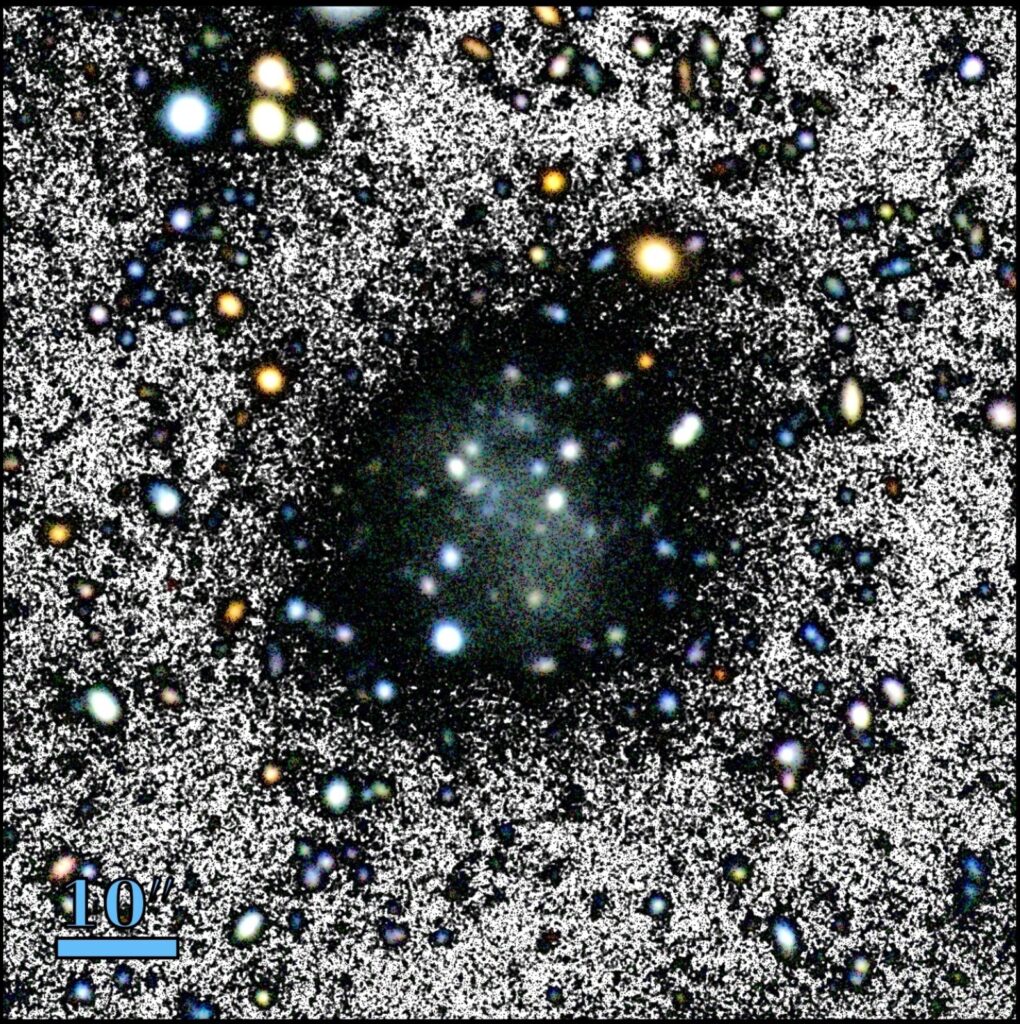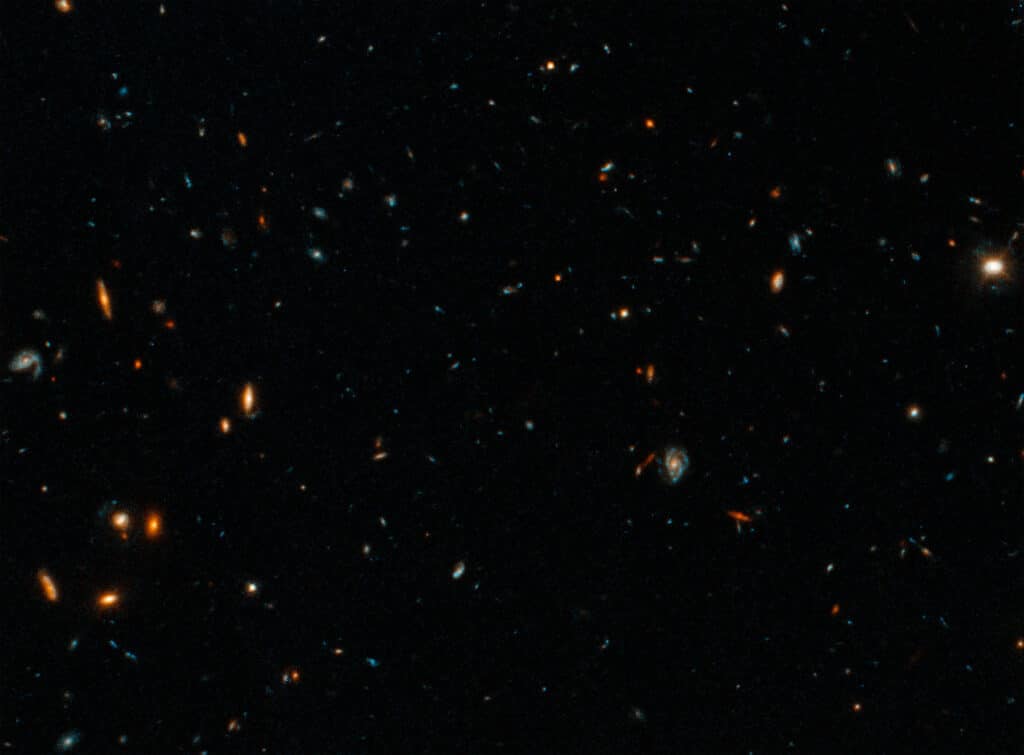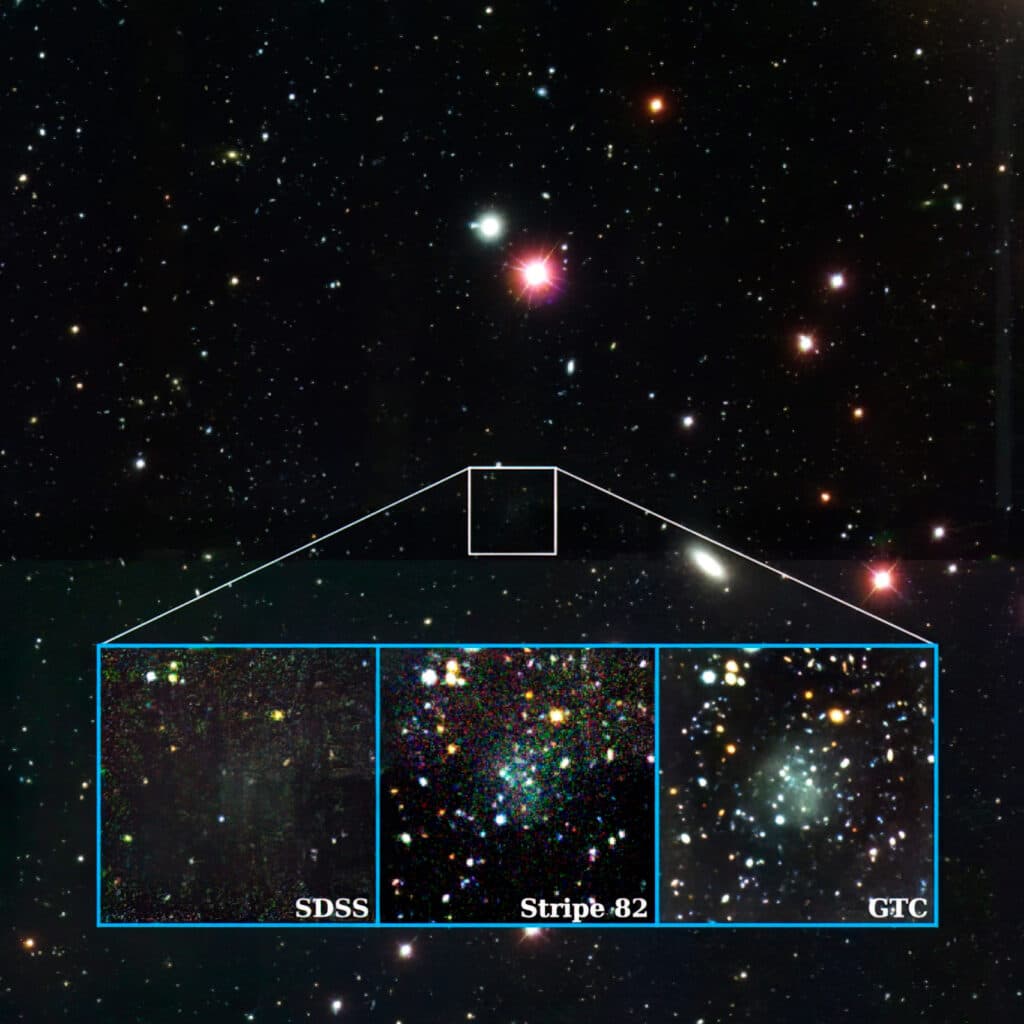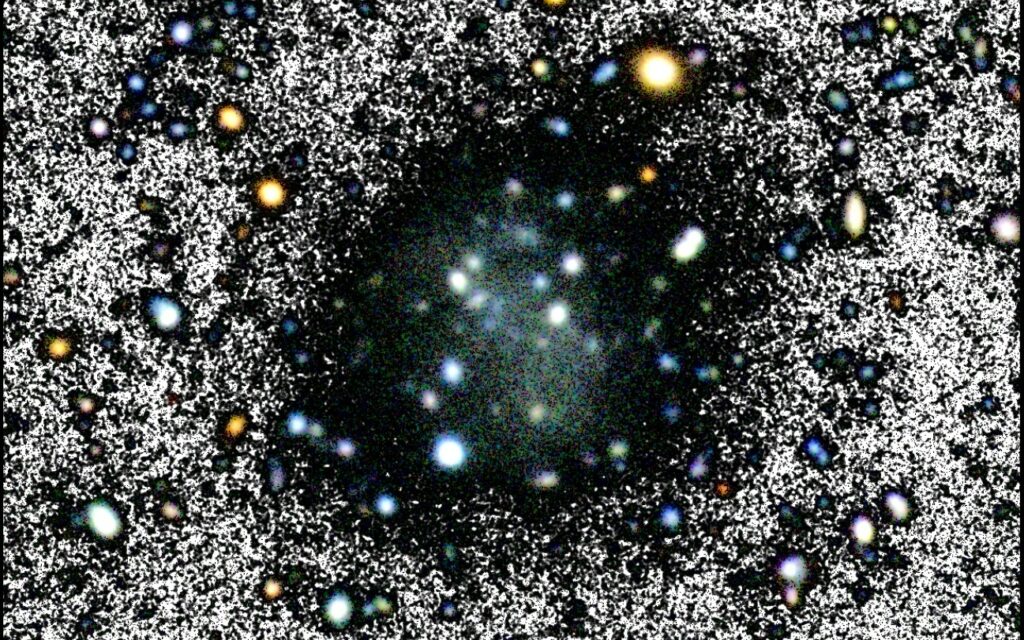‘We Do Not Understand How A Galaxy With Such Extreme Characteristics Can Exist’
A nearly invisible dwarf galaxy is challenging the model of dark matter. An international team of astronomers, led by the Instituto de Astrofísica de Canarias (IAC) in collaboration with the University of La Laguna (ULL) and other institutions, discovered this fascinating galaxy dubbed “Nube.”
Key Findings
- Unique Composition: Nube is distinguished by its low surface brightness and a significant amount of dark matter, which is unusual for known galaxy types.
- Challenge to Current Models: The properties of Nube challenge existing cosmological models, especially those based on the concept of cold dark matter, suggesting that alternative models like fuzzy dark matter might be more accurate.
- Advancements in Observation Techniques: The discovery of Nube was made possible through advanced deep optical imaging and radio observations, demonstrating the importance of technological advancements in astronomy.
Nube, which means “Cloud” in Spanish, was named by the 5-year-old daughter of one of the researchers, aptly reflecting the galaxy’s ghostly and diffuse appearance. Its discovery is significant because its faint surface brightness allowed it to remain undetected in previous sky surveys, despite its considerable size.
“With our present knowledge we do not understand how a galaxy with such extreme characteristics can exist,” says study first author Mireia Montes, researcher at the IAC and the ULL, in a media release.

Nube is unique in its properties, being ten times fainter yet ten times more extended than other dwarf galaxies with a similar number of stars. Its discovery is akin to finding a hidden treasure in a well-explored attic. Nube is large and yet faint, a ghostly apparition in the universe. To put it into perspective, it’s about one-third the size of the Milky Way but has a mass comparable to the Small Magellanic Cloud.
What sets it apart is its significant amount of dark matter, an invisible substance that does not emit, absorb, or reflect light, making it undetectable by traditional telescopes.
The discovery of Nube began with the analysis of a specific strip of sky by Ignacio Trujillo, the second author of the article, as part of the project Legado del IAC Stripe 82 based on the Sloan Digital Sky Survey (SDSS) images. Upon noticing an intriguing faint patch, the team employed ultra-deep multicolor images from the Gran Telescopio Canarias (GTC) to confirm its existence. The galaxy’s extreme faintness makes determining its exact distance challenging, but initial estimates place Nube at about 300 million light years away. Future observations with the Very Large Array (VLA) radiotelescope and the William Herschel Telescope (WHT) are expected to provide more accurate distance measurements.
Nube’s discovery poses potential challenges to the prevailing dark matter model. Typically, galaxies have denser star concentrations at their centers, with density decreasing outward.

However, in Nube, “the density of stars varies very little throughout the object, which is why it is so faint, and we have not been able to observe it well until we had the ultra-deep images from the GTC,” states Montes.
Current cosmological simulations, based on the cold dark matter model, fail to reproduce Nube’s extreme characteristics. This finding could be pivotal in understanding the universe.
“It is possible that with this galaxy, and similar ones which we might find, we can find additional clues which will open a new window on the understanding of the universe,” explains Montes.
One exciting possibility raised by Trujillo is that Nube’s properties might indicate that dark matter particles have an extremely small mass. Such a discovery would not only challenge current cosmological models but also link the realms of quantum physics and galactic-scale phenomena.

“If this hypothesis is confirmed, it would be one of the most beautiful demonstration of nature, unifying the world of the smallest with that of the largest,” says Trujillo.
The study of Nube opens the door to alternative models of dark matter. One such model is the fuzzy dark matter, composed of ultralight particles. This model could provide a better explanation for Nube’s unusual properties. If this is true, it could revolutionize our understanding of the fundamental nature of dark matter.
The discovery of Nube marks a significant milestone in astronomy, potentially leading to a deeper understanding of the universe’s mysteries and the fundamental nature of dark matter.
The study is published in the journal Astronomy and Astrophysics.
In Case You Missed It!
- So Long, Einstein? Astrophysicist Develops New Theory Of Gravity
- A Way To See Dark Matter? Pulsars Could Shine Light On Cosmic Mystery, Literally
- Universe Is Expanding Faster Than Predicted, And Physicists Aren’t Sure Why
- Supercomputer’s Simulation Of Universe’s Evolution May Rewrite Understanding Of Space
- JWST Reveals Milky Way’s Ancient Counterparts, Challenging Long-Held Theories About Universe













dark matter is the satans particle. burn your eyes out
Isn’t God creative and amazing?!
Easy to believe – Genesis 1:1
That’s what I thought!!
It doesn’t exist. None of them do (including the Milky Way). That is just how space looks from inside our atmosphere. From the outside space appears to be a vast black void with only the objects in our solar system visible.
It’s proof of Creation.
I never want to hear “could be” from any scientist or journalist.
Why do I have to explain your job to you?
God- oh geez, they just found some of my early work. This is so embarrassing. I never published that one and figured it was deep enough in the closet.
My hypothesis is that some or all dark matter is in fact billions of completely enclosed habitats, and each could be the size of a small planet. Inside the habitats are complete civilizations, biological or otherwise, although after all these billions of years many or most of the habitats are probably cold dead derelicts. The active habitats would dispose of waste heat in a non-isotropic manner for maximum stealth. We can only detect dark matter by its gravitational influence, which places almost no limit on the size of the constituent “particles”.
Editors and proofreading appear to also be a mysteriously missing commodity in this universe.
Nube however is indeed a wonderful thing to have found.
Random particles melding to create such spectacular structures is beyond my ability to believe in.
An intelligent design is the only possibility. Thanks Lord.
As of right now, dark matter does not exist. No amount of taxpayer money has found any real evidence of it. Just because some folks think, or are convinced it exists does not make it real. Science has found no proof.
I love it!!! Dark Matter, an invisible substance that does not emit, absorb or reflect light….but honest….its there!!!! Here… smoke this!!
Scientists are great to party with, you ask them how it all started..they get a blank look on their face and then..POOF…they holler “The “Big Bang Theory” which is sci-speak for “we don’t f###ing know”! True story, they don’t!!
I’ve always wondered how we can see light from the creation of the universe 14 billion years ago.. If we all began with the same big bang we somehow got to where we are faster then the speed of light to be able to look back to where we were.
We are made from stardust will return to stardust